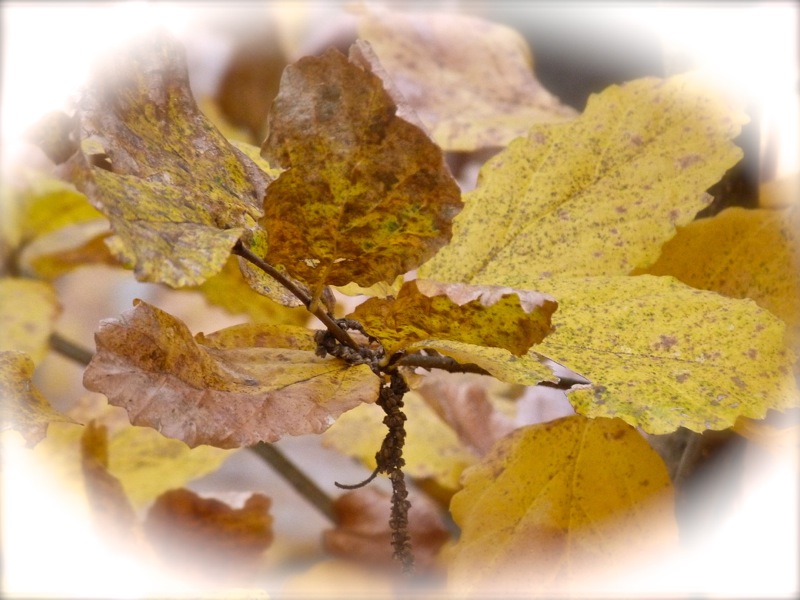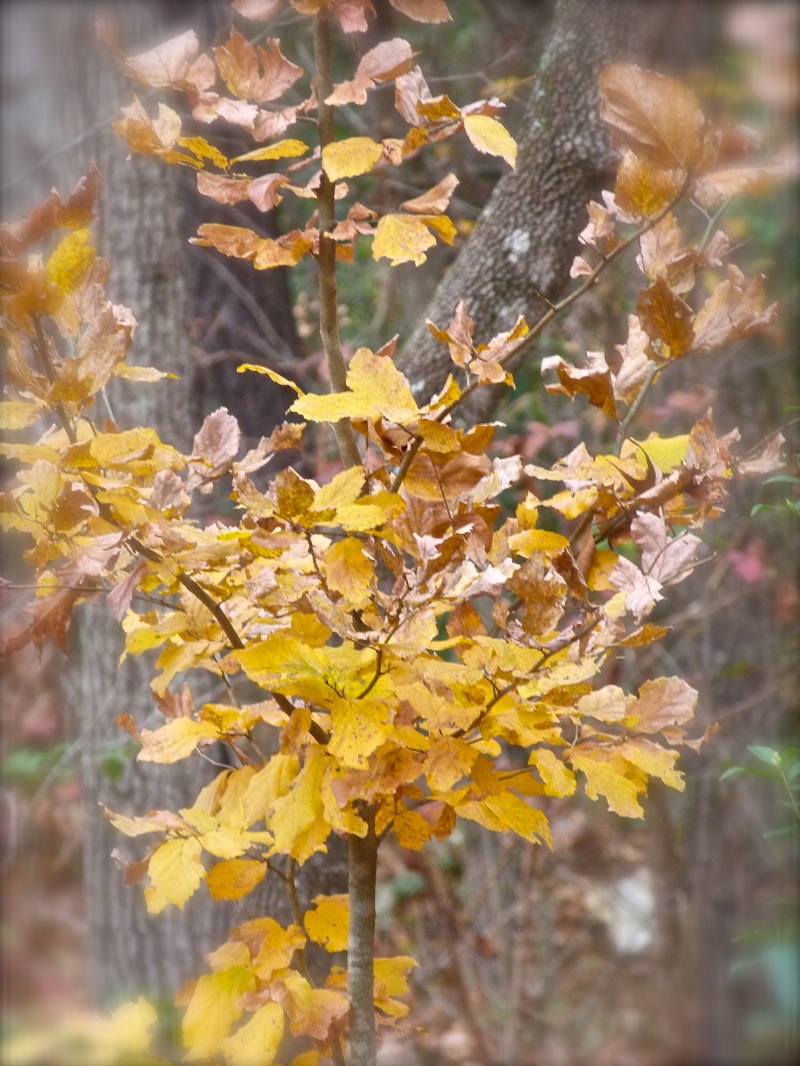Persian Ironwood
 Sunday, December 9, 2012 at 5:00AM
Sunday, December 9, 2012 at 5:00AM Several years ago the owner of a local nursery persuaded me to buy a Persian ironwood tree, Parrotia persica. It was only a two foot sapling, but he told me it was a special tree that deserved more publicity. I was intrigued so I brought it home and planted it in the area I call the Lady Garden.
Then I forgot about it. It was small and did not have much impact.
A few days ago I was outside looking over the garden when a bright spot of yellow in the Lady Garden caught my eye. Most of the fall foliage is gone now, so I walked down to investigate.
Why, there you are! Look at you, and when did you grow so tall?
I was admiring the parrotia tree, still glowing in buttery colors, though the leaves were past their glory.

I was amazed when I realized my little sapling was taller than me now. Sort of like a teenage boy, it had shot up over the summer. By next year it will look like a real tree.
Parrotia is a native of Iran and will grow here in the US in hardiness zones 5-8. It is an easy care tree, tolerant of clay soil, air pollution, wind, and heat. It grows well in partial shade to full sun. Persian ironwood will be most successful and display best fall colors in moist but well drained acidic soil. It does not like soggy roots. In fact, it is drought tolerant after it is established, though it does need to be well watered its first year. It has few insect or disease problems and is also deer resistent. Perrotia will grow to about 30 feet tall and wide with an oval crown. It may have multiple trunks, or it may be trained to a single trunk with a central leader. Oval leaves up to five inches long and with wavy edges emerge reddish purple in the spring, then become deep green by summer. Prior to the leaves, small, spider-like flowers appear in clusters about 1/2 inch across. It is a member of the witch hazel family, and it is easy to see the resemblance to its cousins.
Top: A mature parrotia. Lower left: Parrotia leaves. Lower right: Parrotia flowers. (All three are public domain photos)
One of the outstanding characteristics of a mature specimen is the pinkish-brown bark, which exfoliates to reveal tan, pink, white and green patches, particularly notable in the winter.
Parrotia persica is a long lived, low maintenance tree that is an excellent specimen for year round interest. I am looking forward to watching mine mature.
 Permalink
Permalink 